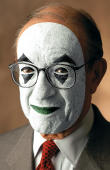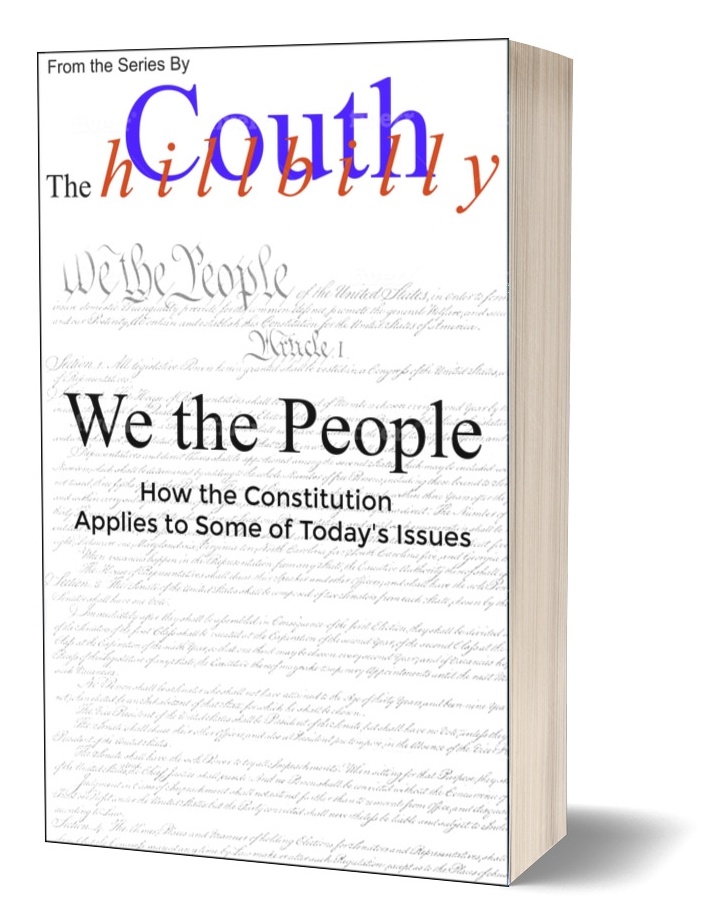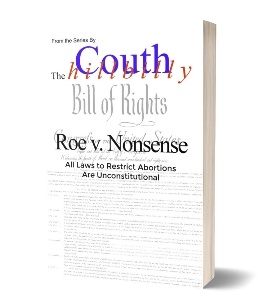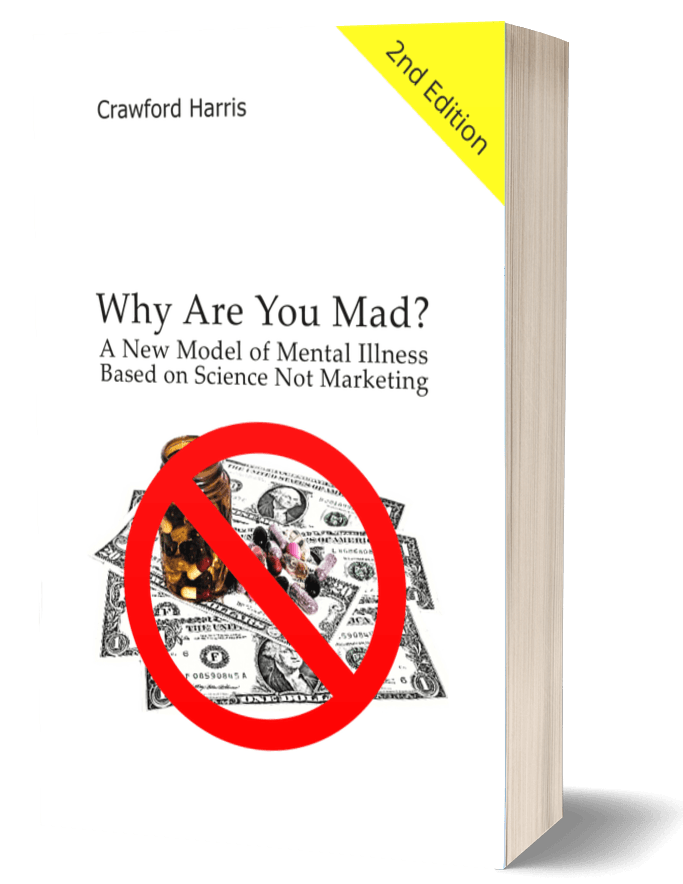 Yes. I know that his makeup is that of a mime, not a clown. Perhaps he could appropriate The Donald’s hair.
Yes. I know that his makeup is that of a mime, not a clown. Perhaps he could appropriate The Donald’s hair.
Unlike a mime, Alan just can’t shut up. He has regained his belief in his role as an oracle.
Whatever his self-assessment, the fact remains that Mr. Greenspan is a clown. Did he just recently become one? No. It occurred sometime before his public life began.
Yes. That means he was being revered as an expert on economics all those years when he was really an incompetent clod.
In the midst of the economic meltdown, Alan lost his lifetime mooring. More accurately, he became aware that his lifelong mooring was a chimera.
Here, in my blog, we have a special dispensation. We can make Mr. Greenspan testify against himself. Out of the mouths of ideologues comes drivel
“The use of a growing array of derivatives and the related application of more-sophisticated approaches to measuring and managing risk are key factors underpinning the greater resilience of our largest financial institutions . . . Derivatives have permitted the unbundling of financial risks.” — May 2005. The “invisible hand” triumphant.
“How could I have known?” – October 2008. The “invisible what?”
Greenspan admitted that his lifelong faith in the self-correcting power of free market economics was misplaced. One of the self-proclaimed leaders of the fight against all regulation then told us, “Those of us who have looked to the self-interest of lending institutions to protect shareholders’ equity, myself included, are in a state of shocked disbelief,” – Congressional testimony – October 2008. Perhaps the hand is invisible because it really isn’t there.
They say that you can’t keep a good man down. It appears that neither can you keep old Alan down. He is trying hard to convince himself that the ideology to which he devoted his limited talents, the blathering of Ayn Rant, was valid after all. We can mark his process of recovery by the following statement from last week.
 “Today’s competitive markets, whether we seek to recognise it or not, are driven by an international version of Adam Smith’s “invisible hand” that is unredeemably opaque. With notably rare exceptions (2008, for example), the global “invisible hand” has created relatively stable exchange rates, interest rates, prices, and wage rates.” Is it necessarily the case that, once an ideologue, always an ideologue? He thinks he found that invisible hand again.
“Today’s competitive markets, whether we seek to recognise it or not, are driven by an international version of Adam Smith’s “invisible hand” that is unredeemably opaque. With notably rare exceptions (2008, for example), the global “invisible hand” has created relatively stable exchange rates, interest rates, prices, and wage rates.” Is it necessarily the case that, once an ideologue, always an ideologue? He thinks he found that invisible hand again.
Some wag came up with this analogy: “With notably rare exceptions, Newt Gingrich is a loyal and faithful husband.”
Cute, but my problem is with is with little Alan’s less than impressive command of his native tongue. The “invisible hand” is opaque? Something that is opaque by definition can be seen. One cannot see through it. An inability to use language correctly severely constrains ones ability to think logically. To already be burdened by the illogic of an ideology likely forecloses the possibility of rational thought.
Unredeemably opaque? We’ll just let that pass. Pretend it’s invisible.
For your edification, here are a few more bon mots:
“With notably rare exceptions, Japanese nuclear reactors have been secure from earthquakes”
“With notably rare exceptions, Charles Manson has lived a peaceful life”
With notably rare exceptions, Germany remained largely at peace with its neighbors during the 20th century.
With notably rare exceptions, the levees protecting New Orleans have held fast in the face of major hurricanes.
Notably Rare Exceptions: The Invisible Hand was temporarily missing
Panic of 1797 (1796-99)
Recession of 1802-04
Depression of 1807 (1807-10)
Recession of 1812
Depression of 1815-21
Recession of 1822-23
Recession of 1825-26
Recession of 1828-29
Recession of 1833-34
Recession of 1836-38
Depression of 1839-43
Recession of 1845-46
Recession of 1847-48
Recession of 1853-54
Panic of 1857 (1857-58)
Recession of 1860-61
Recession of 1865-67
Recession of 1869-70
Panic of 1873 (1873-79)
Recession of 1882-85
Recession of 1887-1888
Recession 1890-91
Panic of 1893
Panic of 1896
Recession of 1899-1900
Recession of 1902-04
Panic of 1907
Panic of 1910-11
Recession of 1913-14
Post World War I Recession 1918-19
Depression of 1920-21
Recession of 1923-24
Recession of 1926-27
Great Depression 1929-33
Recession of 1937 (1937-38)
Recession of 1945
Recession of 1949 (1948-49)
Recession of 1953 (1953-54)
Recession of 1958 (1957-58)
Recession of 1960-61
Recession of 1969-70
Recession of 1973-75
Recession of 1980
Recession of Early 1980s (1981-82)
Recession of Early 1990s (1990-91)
Recession of Early 2000s (2001)
Great Recession (2007-09)
Those are the official panics, depressions and recessions. Notice that, while the Great Recession officially ended in June of 2009, the unemployment, dislocation and other after-effects linger. Also, there are specific criteria for designating a period as one of these situations. For instance, there was what the public called a recession in the mid1980s. It was one quarter of decline in economic activity and one that was flat. The after-effects were the same as for official recessions and persisted considerably longer than one or two quarters.
It appears we have been blessed with a surfeit of notably rare exceptions.

.
.




are you on linkedin?
Not to my knowledge.